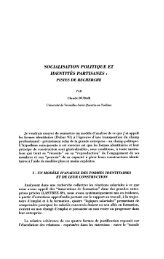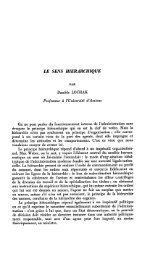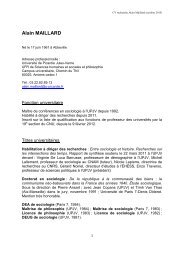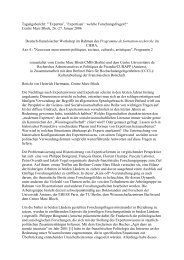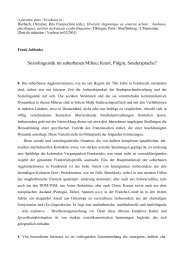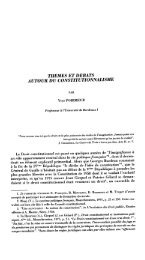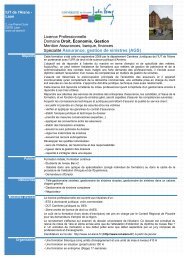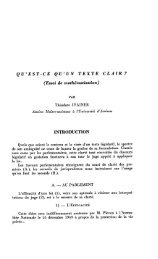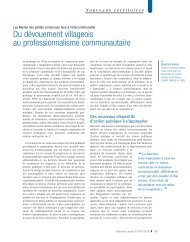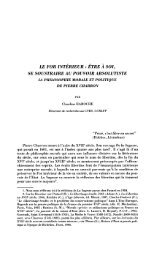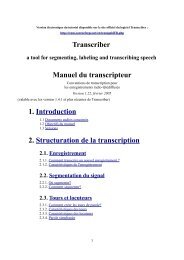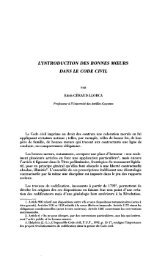Inspiring experiments exploit strong attraction of magnets
Inspiring experiments exploit strong attraction of magnets
Inspiring experiments exploit strong attraction of magnets
Create successful ePaper yourself
Turn your PDF publications into a flip-book with our unique Google optimized e-Paper software.
Figures 3 and 4. The rolling wire (top image): a<br />
demonstration <strong>of</strong> the force on a conductor<br />
achieved by rolling a thick piece <strong>of</strong> brass rod along<br />
a pair <strong>of</strong> brass curtain rails using an Alnico<br />
magnet held above the wire to produce a vertical<br />
field. The kicking wire (bottom): a large Alnico U<br />
magnet is used to produce a vertical field at rightangles<br />
to the current and to the subsequent motion.<br />
the expense <strong>of</strong> the large Alnico magnet, but a similar<br />
effect can be obtained with magnadur <strong>magnets</strong>.<br />
With neodymium iron boron <strong>magnets</strong> a kicking<br />
wire can be set up for less than £5 by mounting<br />
a single round neodymium magnet in a hole in a<br />
block <strong>of</strong> wood and using a trapeze-style copper<br />
frame (figure 5).<br />
Double magnet roller<br />
We can use neodymium disc <strong>magnets</strong> as both the<br />
wheels <strong>of</strong> a roller and the source <strong>of</strong> the magnetic<br />
field. In this set-up (figure 6) two discs are placed<br />
carefully on the smoothed, flat end <strong>of</strong> a nail with its<br />
head cut <strong>of</strong>f. It is important that the nail axle is<br />
aligned exactly with the centres <strong>of</strong> the <strong>magnets</strong> to<br />
produce a good run. The strength <strong>of</strong> the neodymi-<br />
July 2006<br />
F RONTLINE<br />
Figure 5. Kicking wire set-up using a neodymium<br />
magnet and a copper wire trapeze frame. The<br />
wire carries the current across the top <strong>of</strong> the<br />
magnet and the force causes the frame to move.<br />
nail shaft<br />
aluminium foil<br />
neodymium magnet<br />
magnetic field<br />
inside magnet<br />
current<br />
Figure 6. Rolling motor (shaft <strong>of</strong> nail) with two<br />
neodymium disc <strong>magnets</strong>, with explanation.<br />
ums enables them to be fixed with like poles facing<br />
each other. This is essential to produce a turning<br />
force on both wheels in the same sense. The tracks<br />
are two strips <strong>of</strong> aluminium foil, stuck to the bench<br />
with overhanging ends for electrical contacts. The<br />
current flows down the aluminium and up through<br />
one magnet, along the nail and down through the<br />
P HYSICS E DUCATION 293





